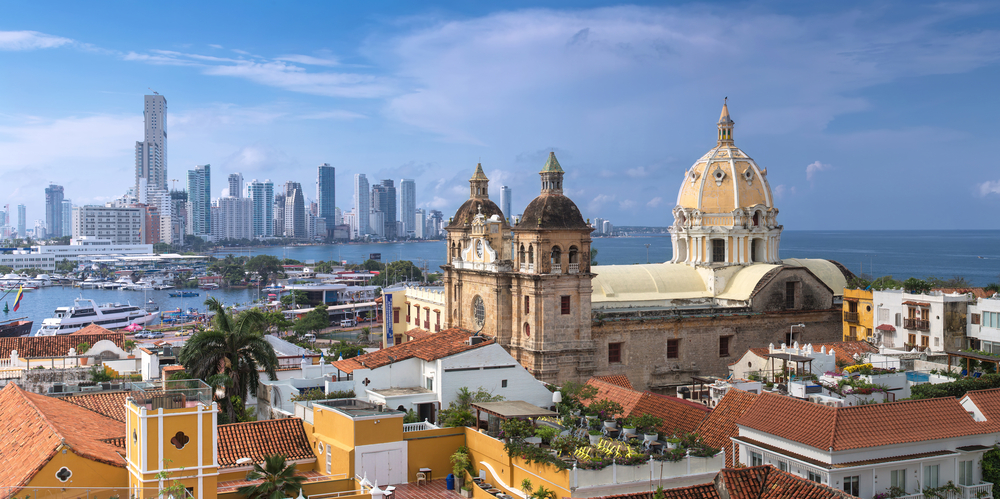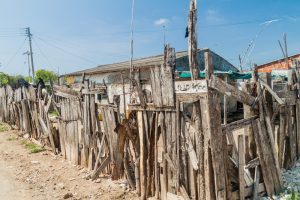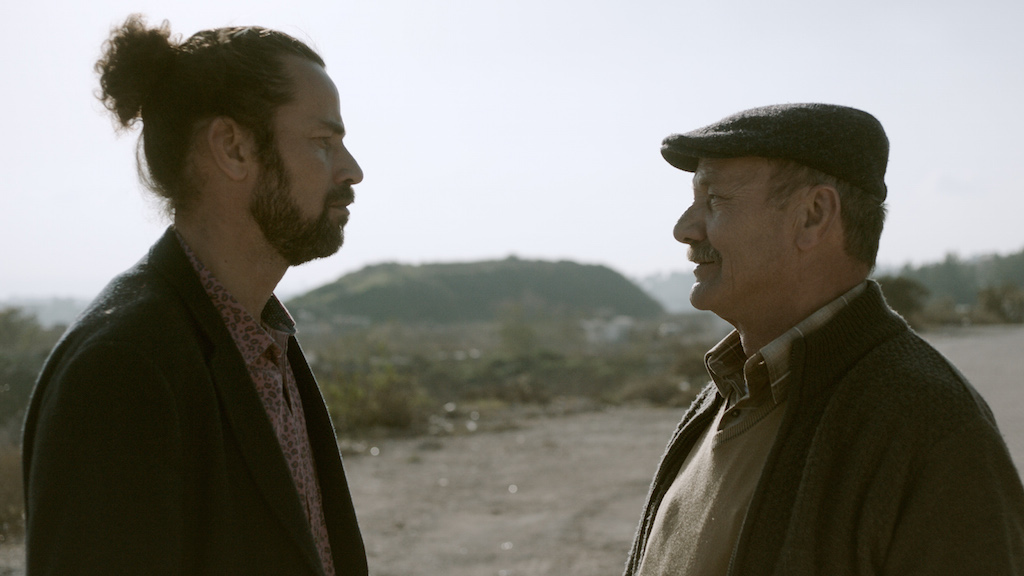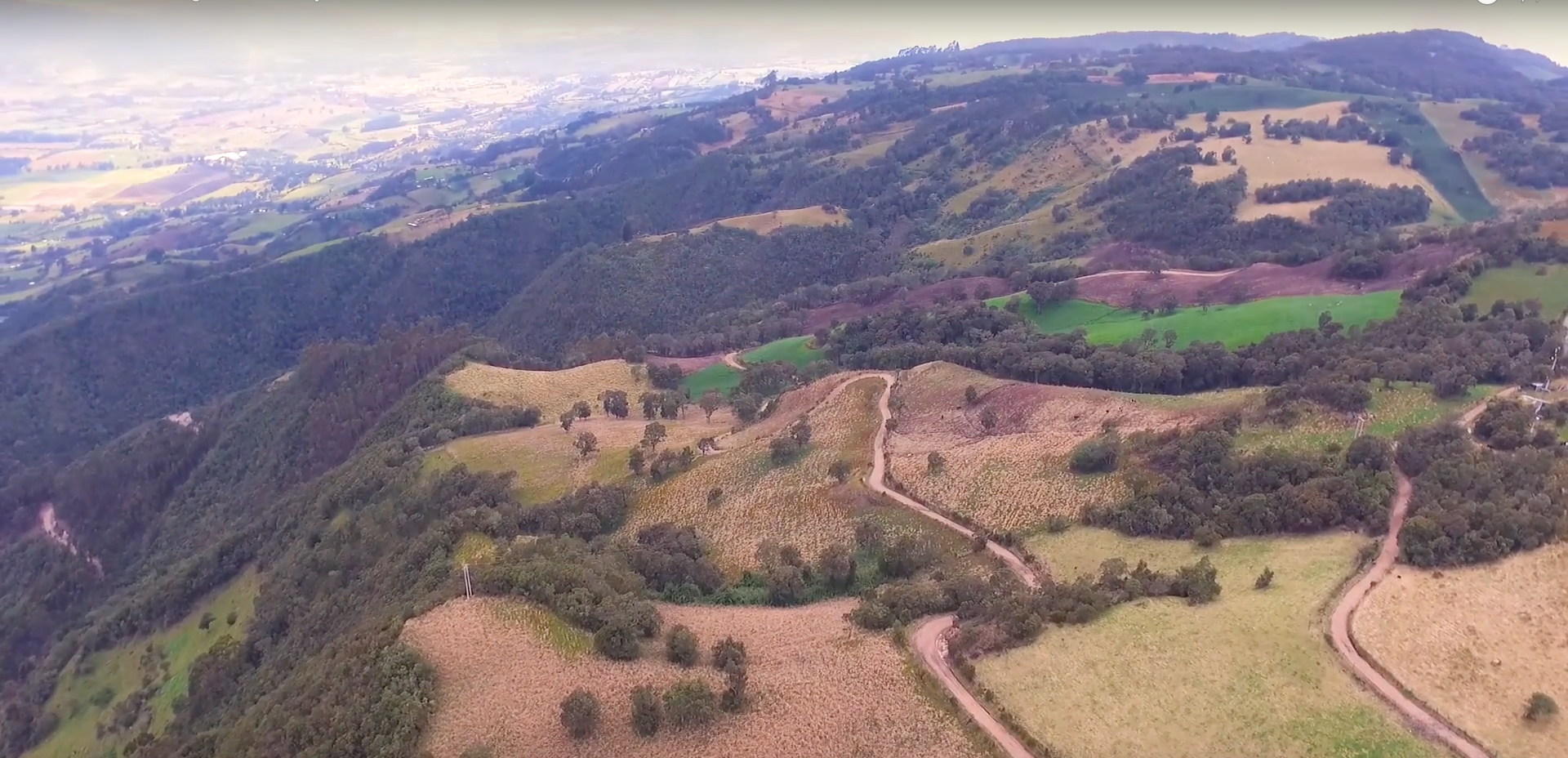
Image courtesy of Shutterstock.
In comparison to neighbouring South American countries, Colombia has made fairly significant steps towards a sustainable environmental policy in the past few years. The fact that this year’s presidential candidates have all presented an environmental proposal in their manifestos is a victory in itself. In January of last year, for example, a plastic bag tax was introduced, which has alone led to a 27% percent reduction in their use throughout the country.
However, the impacts of sustained environmental damage are most felt and most visible along the country’s coastline, where most of the waste tends to end up in the sea. The colonial city of Cartagena is the country’s second most visited city by tourists, second only to the capital city of Bogotá. According to the CITUR (Centro de Información Turística de Colombia), in 2017, the department of Bolívar hosted some 435,967 foreign visitors. As a result, the constant influx of tourism generates masses of waste that the comparatively small city struggles to keep up with.
Recycling in Cartagena has been labelled “an ecological disaster” by wildlife conservation consultant Thomas Lyster in conversation with The Bogotá Post. The city has four centros de acopio, or depots, which are full to the brim, where refuse is sorted and then sent to cities such as Medellín and Cali to be processed. Aside from these, there are also 157 chatarrerías, or scrapyards, which serve as recycling centres.
As one of Colombia’s major cities, however, Cartagena continues to lag a long way behind larger cities. It recycles just 14% of the total rubbish produced by the city, of which 1000 tonnes are produced daily, compared to Medellin’s 300, according to Ana Raquel Mar Amaranto who oversees the centros de acopio in Cartagena. Instead, waste is often dumped in landfill sites and public areas on the outskirts of the city, as well as the sea. Environmental manager Mar Amanto puts the attitude towards waste down to “a lack of interest and desire… citizens do not know the importance of making the most of their resources and the social and environmental repercussions,” she told The Bogotá Post.

Image courtesy of Shutterstock
To put the situation on the coast into context with cities such as Bogotá and Medellín, recycling is much more a part of the culture of these metropolises. This is largely down to initiatives like Decree 596, issued in 2016 with the support of the Environmental Secretary, which focuses on the formalisation of informal street labourers and recyclers, who are paid per tonne of rubbish they recycle. “As a result,” said the Press Secretary of the Mayor of Bogotá’s Special Public Services Administrative Unit (UAESP), “both citizens and informal recyclers now have a better understanding of the role they each have to play in the recycling chain, which has allowed recycling activities to become accessible to all.”
Colombia’s capital city has 13 public recycling depots and recycles an average of 30,000 tonnes of rubbish per month, according to figures from the last three years provided by the UAESP. According to their Press Office, there have also been notable positive changes in recycling in Bogotá over the past few years. Thanks to the 2016 PGIRS (Plan for the Integrated Management of Solid Waste) a series of projects have been established to encourage people to intelligently utilise waste and educate them on the best ways to do it.
Medellín, on the other hand, has seven public centros de acopio, property of the Municipality of Medellín, and 350 chatarrerías, or recycling centres. Similarly, government organisations such as RECIMED, a co-operative founded in 2006, have allowed informal paisa recyclers to make money from recycling and at the same time keep the streets clean. According to its Administrative Director, Leonardo Gómez Marín, the organisation has around 17,000 members and works with informal recyclers of 120 different entities, such as universities, shopping centres and different companies.
On the other hand, in the city of Cartagena, it is small businesses that are setting the example and taking it into their own hands to invest in environmental initiatives. Together, their goal is to eventually make Cartagena a more sustainable city, where the tourist and waste management industries are able to coexist.

Image courtesy of Shutterstock.
After noticing how inadequate the waste management system was in the village of Bocachica, on the island of Tierrabomba, boutique hotel owner and manager Portia Hart decided to combine her business mindset with sustainability expert Caitlin Oliver’s knowledge to form Green Apple.This not-for-profit social enterprise’s goal is to create a sustainable and long-lasting waste management programme within the hospitality industry in Cartagena. Since forming in November of 2017, among other achievements, Green Apple have managed to divert 3,000kg of waste from landfill, construct a sorting centre out of 6,441 empty bottles, build a worm farm to compost organic waste and start to collect recyclable materials from a neighbouring village.
Although an NGO, Green Apple’s projects sustain themselves by revenue generated from their projects. These include sales of used kitchen oil and other recycled materials, a per kilo charge for glass waste disposal, monthly retainers from local restaurants for organic waste management and kitchen gardens, and encouraging contributions from participating hospitality companies, such as restaurants.
“It’s very exciting that there is a growing movement here of people interested in sustainability because they understand the importance for our environment, the health of people, the economy (jobs and tourism) and protection for future generations”, says Caitlin, who is in charge of the NGO.
Through demonstrating the economic benefits to being environmentally friendly, providing much needed employment and educating both locals and tourists on the importance of sustainability, Green Apple hopes to achieve its goal of improving Cartagena’s current environmentally unsustainable approach to tourism and waste management.
Green Apple works particularly closely with Ecoil, a company who collect used vegetable oil from the hospitality industry and process it, converting it into biodiesel. This not only provides an eco-friendly way to dispose of the product, which, through its natural disposal, contaminates the environment and generates health problems, but also saves wasting it.
Although the oil is processed and filtered in Medellín, the majority of the sources come from restaurants and hotels in coastal cities such as Cartagena and Barranquilla. On the coast, particularly large quantities of oil tend to be used and wrongly disposed of, due to the booming tourist industry and the demands it creates.

Image courtesy of Shutterstock.
Ecoil pays $1000 pesos per litre of used vegetable oil, however, due to difficulty in acquiring permits and regulations, only a small portion of the raw oil stays in Colombia. The rest is sent abroad to be converted into biofuel, which by law in Colombia must represent 10% of all ACPM diesel in Colombia. This type of fuel is often used in big vehicles and trucks, so some of the oil is then imported back into the country.
Despite the relatively small quantities of biodiesel sold within Colombia, the differences Ecoil is making in the disposal of used vegetable oil are significant, and benefit not only the environment, but also public health. In fact, according to Diana Vazquez Cuadros, manager of the oil collection in Cartagena, there has been a recent notable increase in the demand for tourism companies who are keen to use Ecoil. “We have noticed how tourism business owners have become more conscious of ensuring that the oil ends up in good hands, which in this case, are ours,” she explained.
Another local business that has this year moved towards a more sustainable tourism is Cartagena tailored travel agency Galavanta, who have recently launched their own carbon balancing and offset scheme. This works by calculating a client’s total carbon footprint generated by their trip and charging the client for their usage, reinvesting the capital into environmental conservation.
This money is then used to plant ‘conservation corridors’ of native bosque seco tropical in carefully chosen reforestation sites near Turbaco, and in areas of high conservation value near San Juan, Bolívar. Galvanta is also working on wildlife conservation projects to ensure the protection of endangered animal species in Colombia, such as the cotton-top tamarin.
“We hope that this scheme is the first step to balancing our own carbon footprint as a company,” explained Galavanta conservation consultant Thomas Lyster, “and we also aim to totally be rid of plastic bottles from our recycling equation, only using refillable ‘bottles for life’ instead.”

Image courtesy of Shutterstock.
Galavanta co-founder Alexis Pradie also highlighted the overall lack of sustainable tourism initiatives in Cartagena, explaining the industry’s general failure to understand that its future depends on the protection of natural resources. After being in the tourism industry for three years, the start of this year provided a perfect opportunity for Galavanta to invest in conservation.
“If applied properly, I deeply believe that tourism in Colombia could bring many resources to help with the conservation of its incredible fauna and flora and the education of local communities,” explained Pradie.
The most important change that Mar Amanto, manager of Cartagena’s centros de acopio would like to see in the city is “education of citizens on how to manage natural resources,” she told The Bogotá Post. As a city where tourism plays such a large part in the economy, steps must be taken to improve waste management so that it does not impact upon the city’s most lucrative industry.
Likewise, it is more important than ever that the tourist industry becomes more sustainable and reduces its own carbon footprint. Perhaps this small co-operative of local sustainability masterminds can prove that it is possible for both industries to work together and share initiatives, in order to educate and involve as many people as possible. After all, it is up to both local citizens and tourists to ensure that Cartagena becomes a more environmentally sustainable city.





